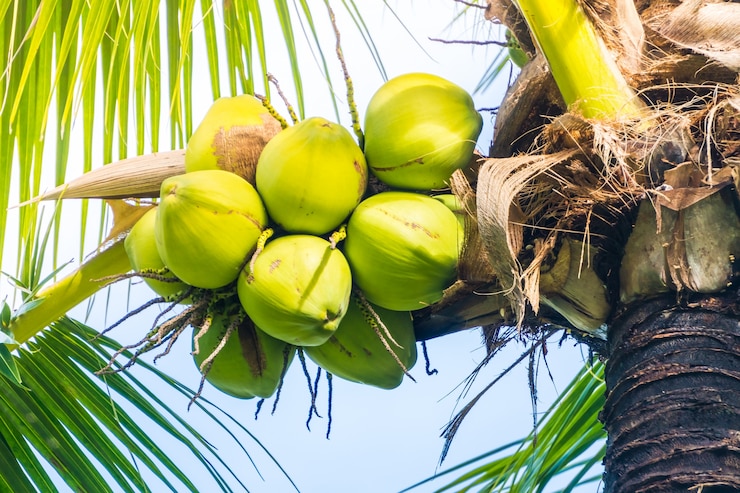Coconut trees are iconic and versatile plants known for their tropical appeal and the many benefits they offer. While South Africa may not have the ideal climate for widespread coconut cultivation, certain coastal areas with a warmer climate can support coconut tree growth. If you’re considering growing coconuts in South Africa, here are ten important factors to keep in mind:
- Climate Requirements: Coconut trees thrive in tropical climates with high temperatures and abundant rainfall. Coastal regions of KwaZulu-Natal, such as Durban and the North Coast, have a more suitable climate for coconut cultivation due to their warm and humid conditions.
- Site Selection: Choose a site that offers protection from strong winds, as coconut trees are vulnerable to wind damage. The area should receive ample sunlight throughout the day, and the soil should be well-draining to prevent waterlogging, as coconuts do not tolerate waterlogged conditions.
- Soil Type: Coconuts prefer sandy loam soil that is rich in organic matter. The soil should be slightly acidic to neutral, with a pH range of 5.5 to 7.5. Conduct a soil test to assess its nutrient content and make any necessary amendments to ensure optimal growing conditions.
- Irrigation: While coconut trees are tolerant of saltwater and drought conditions, they require regular and consistent watering, especially during the establishment phase. Adequate irrigation is essential for promoting healthy tree growth and ensuring proper fruit development.
- Planting Method: Coconuts are typically grown from fresh, mature coconuts with intact husks. Plant the coconuts directly into the ground, burying them halfway with the husk facing up. This allows the roots to penetrate the soil and provides natural protection against pests and diseases.
- Tree Spacing: Coconut trees require sufficient space to grow and spread their fronds. Plant them at least 9 to 12 meters apart to allow for proper airflow and to prevent overcrowding. Consider the mature size of the trees when planning your spacing.
- Fertilization: Coconut trees benefit from regular fertilization to ensure healthy growth and abundant fruit production. Apply a balanced fertilizer specifically formulated for palms. Follow the recommended application rates and schedule, adjusting based on the tree’s age and condition.
- Pest and Disease Management: While coconut trees are relatively resilient, they can be susceptible to certain pests and diseases. Monitor your trees regularly for signs of infestation or disease, and take prompt action if necessary. Consult with local agricultural experts for guidance on pest and disease management.
- Pruning: Pruning coconut trees is generally limited to removing dead or damaged fronds and any suckers or offshoots that may emerge around the base of the tree. Pruning should be done with caution to avoid injuring the tree or disrupting its growth.
- Patience and Longevity: Coconut trees are slow-growing, and it takes several years for them to reach maturity and start bearing fruit. It’s important to have patience and commit to long-term care and maintenance. With proper cultivation and care, coconut trees can live for several decades and provide a bountiful harvest.
While growing coconuts in South Africa may present some challenges due to the climate limitations, it is possible in certain coastal areas. Ensure you have the appropriate climate, soil conditions, and the necessary resources and commitment to successfully grow coconut trees. With careful planning and cultivation, you can enjoy the tropical beauty and the delicious, nutritious fruits of the coconut tree in your South African garden.
Join 'Farmers Mag' WhatsApp Channel
Get the latest Farming news and tips delivered straight to your WhatsApp
CLICK HERE TO JOIN






